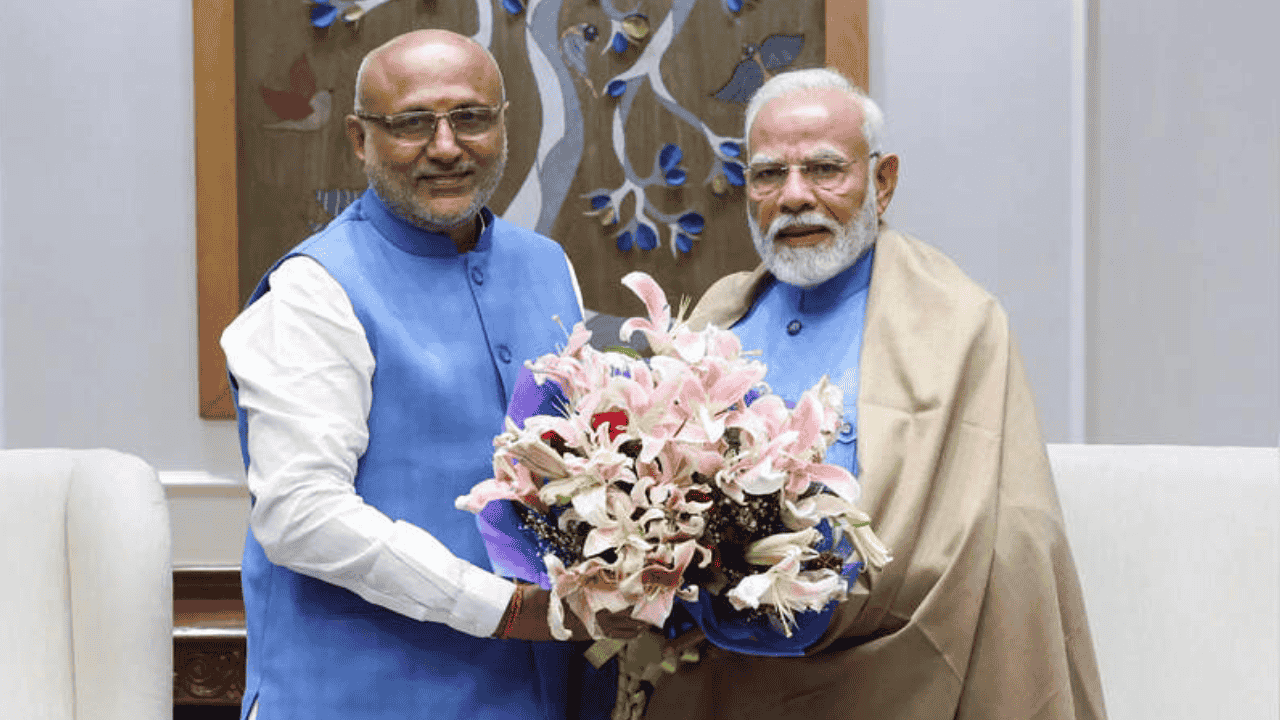Major Political Development: NDA Candidate Wins Vice Presidential Election
In a significant political development on September 9, 2025, Chandrapuram Ponnusamy (C.P.) Radhakrishnan was elected as the 15th Vice President of India. The National Democratic Alliance (NDA) nominee secured a decisive victory against Opposition candidate Justice B. Sudershan Reddy in an election that showcased both political arithmetic and constitutional procedures.
Election Results and Vote Breakdown
The election results revealed the strength of the ruling coalition while highlighting interesting voting patterns:
Final Vote Tally:
C.P. Radhakrishnan (NDA): 452 votes (60.10%)
B. Sudershan Reddy (Opposition INDIA bloc): 300 votes (39.90%)
Invalid votes: 15
Total valid votes: 752
Voter turnout: 98.2% (767 out of 781 eligible MPs)
The margin of victory was 152 votes, which exceeded expectations and indicated possible cross-voting from Opposition ranks. BJP leaders claimed that at least 15 Opposition MPs voted for the NDA nominee, while the Opposition maintained unity in their ranks.
About C.P. Radhakrishnan: Profile of India's New Vice President
Personal Background:
Full Name: Chandrapuram Ponnusamy Radhakrishnan
Born: May 4, 1957 (age 67) in Tiruppur, Tamil Nadu
Community: Kongu Vellalar Gounder (OBC)
Education: Bachelor of Business Administration from V.O. Chidambaram College, Thoothukudi
Political Journey:
Early Start: Joined RSS and Bharatiya Jana Sangh at age 16-17
Electoral Success: Elected to Lok Sabha from Coimbatore in 1998 and 1999
Party Leadership: Served as BJP Tamil Nadu State President (2003-2007)
Governorships: Governor of Jharkhand (2023-2024), Telangana (briefly in 2024), and Maharashtra (July 2024-September 2025)
Notable Achievements:
Conducted a 93-day, 19,000-kilometer 'Ratha Yatra' across Tamil Nadu
Chaired the Parliamentary Standing Committee on Textiles
Led the Coir Board from 2016-2020, achieving record export values
Constitutional Context: Why This Election Was Held
This election became necessary following the unexpected resignation of Jagdeep Dhankhar on July 21, 2025. Dhankhar, who assumed office in August 2022 with a term until 2027, cited health reasons for his mid-term departure.
However, political observers noted the timing was significant, as his resignation came:
On the first day of Parliament's Monsoon Session
After accepting an Opposition motion against Justice Yashwant Varma
Following apparent tensions with senior government ministers
Dhankhar became only the third Vice President in India's history to resign before completing his term, after V.V. Giri and R. Venkataraman.
Electoral Process and Constitutional Provisions
Electoral College Composition:
Total eligible voters: 781 MPs (reduced from 788 due to vacancies)
Lok Sabha members: 542 (1 seat vacant)
Rajya Sabha members: 233 elected + 12 nominated (5 seats vacant)
Voting System:
The election follows proportional representation by single transferable vote with secret ballot. Key features include:
Each MP's vote has equal value of 1
No party whip applicable under anti-defection law
First preference vote is mandatory
Quota required: 377 votes (majority of valid votes)
Opposition Performance and Cross-Voting Analysis
Despite claiming unity, the Opposition's performance fell short of expectations:
Opposition Strength Analysis:
Expected strength: 324 votes
Actual performance: 300 votes
Shortfall: 24 votes
The 15 invalid votes coincidentally matched the shortfall in Opposition votes, leading to speculation about intentional vote invalidation. Congress leader Jairam Ramesh termed it a "moral victory," noting the Opposition secured 40% of votes compared to 26% in the 2022 Vice Presidential election.
Parliamentary Dynamics and Attendance
The election witnessed remarkable attendance despite various challenges:
Notable Participation:
Prime Minister Modi cast the first vote
Age no barrier: 92-year-old Deve Gowda voted in wheelchair
Imprisonment not a hindrance: Engineer Rashid voted under police custody from Tihar Jail
Health challenges overcome: Ailing TMC MPs Sudip Bandhopadhyay and Saugata Roy participated
Abstention: Punjab MP Amritpal Singh refused to vote from Assam jail
Political Implications and Reactions
Government Response:
Prime Minister Modi congratulated Radhakrishnan, expressing confidence that he would be an "outstanding VP who will strengthen our Constitutional values and enhance Parliamentary discourse".
Opposition Stance:
Congress President Mallikarjun Kharge hoped the new Vice President would "uphold the highest ethos of Parliamentary traditions, ensuring equal space and dignity for the Opposition".
Significance for BJP:
This victory represents BJP's continued dominance and successful coalition management. Radhakrishnan's Tamil Nadu roots also signal the party's southern expansion strategy.
Why This Matters for Your Exam Preparation
This development holds significant importance for UPSC and other competitive examinations across multiple dimensions:
Polity and Governance (GS Paper 2):
Constitutional provisions regarding Vice President election process (Articles 63-71)
Electoral college composition and voting procedures
Resignation process and constitutional safeguards
Dual role as Rajya Sabha Chairman and Constitutional successor
Current Affairs Relevance:
Latest political developments affecting governance structure
Coalition politics and cross-voting dynamics
Regional representation in constitutional offices
Parliamentary procedures during constitutional elections
Key Learning Points for Aspirants:
Article 66: Vice President election by electoral college of both Houses
Article 67: Five-year term with possibility of resignation
Article 68: Election process for filling vacancies
Article 64: Ex-officio Chairman of Rajya Sabha role
Single Transferable Vote system and proportional representation
Essay and Mains Applications:
Democratic processes and institutional integrity
Coalition governance and political stability
Regional representation in national institutions
Constitutional crisis management mechanisms
This election demonstrates the robustness of India's constitutional framework while highlighting contemporary political dynamics essential for comprehensive exam preparation.







